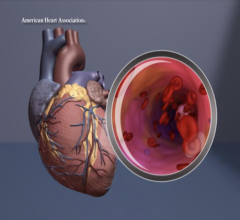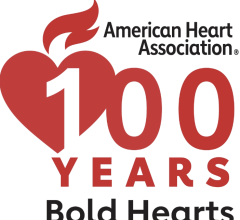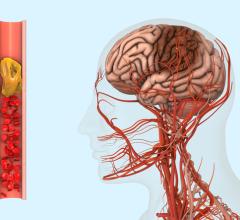
Image courtesy of AHA
November 8, 2023 — The combination of persistent tobacco use and prediabetes (higher than normal blood sugar levels that may progress to Type 2 diabetes) triples the risk of stroke in young adults who do not have other cardiovascular risk factors, according to a preliminary study to be presented at the American Heart Association’s Scientific Sessions 2023. The meeting, to be held Nov. 11-13, in Philadelphia, is a premier global exchange of the latest scientific advancements, research and evidence-based clinical practice updates in cardiovascular science.
“These findings from a large-scale U.S. study warrant early screening and prevention strategies for prediabetes in young tobacco users in order to curtail their risk of stroke,” said study author Advait Vasavada, M.B.B.S., a resident in family medicine at the University of Nebraska Medical Center in Omaha.
The researchers used the National Inpatient Sample, a large national database, to analyze hospital admissions throughout the U.S. in 2019 for more than 1 million young tobacco users (between 18-44 years of age). All were considered metabolically healthy, having no known cardiovascular disease risk factors such as high blood pressure, Type 2 diabetes, high cholesterol or obesity. All had a diagnosis noted on their medical charts as a long-term or persistent tobacco users dependent on nicotine and had difficulty reducing the amount they used.
Of those admitted to the hospital, about two in 1,000 had prediabetes and were dependent on tobacco use. Prediabetes is fasting blood sugar levels that are higher than normal that may progress to a diagnosis of Type 2 diabetes. People with prediabetes are also at increased risk of heart disease and stroke, however, these risks may be reduced through lifestyle changes such as eating healthy foods, weight loss and increased physical activity.
Comparing the hospitalized tobacco users with prediabetes to those without prediabetes, researchers found:
- Higher rates of chronic obstructive pulmonary disease (19.2% vs. 11.7%, respectively), previous heart attack (1.5% vs. 0.4%, respectively) and chronic kidney disease (2.5% vs. 0.9%, respectively);
- A higher chance that the hospitalization was due to heart attack, stroke or heart failure (2.9% vs. 1.4%, respectively); and
- A higher chance that the hospitalization was due to a stroke (1.9% vs. 0.5%, respectively).
- After adjusting for numerous possible factors that may have also played a role (including age, race, sex, household income, alcohol or drug abuse, and some other medical conditions), hospitalized tobacco users with prediabetes had a 3.31 times higher risk that the hospitalization was due to stroke.
“If you’re a metabolically healthy, young adult dependent on tobacco use, it is wise to cut down on but better yet eliminate tobacco use completely. It is also worth noting that having prediabetes can significantly increase your risk of having a stroke at a young age, even if you don’t use tobacco products,” Vasavada said. “Developing an overall healthy lifestyle, plus ensuring that your blood sugar is well controlled and measured in your routine preventive care visits, are advisable.”
Esa M. Davis, M.D., MPH, a member of the American Heart Associations’ Drug, Alcohol and Tobacco Committee said the study results provide further evidence of why tobacco use is dangerous, and quitting is essential for heart disease and stroke prevention.
“Having prediabetes alone already represents a major risk factor for developing cardiovascular disease,” she said. “Adding tobacco use dramatically increases the risk of having a stroke, and thus it’s more important to work on efforts to quit tobacco use.”
Davis is professor of family and community medicine and senior associate dean for population health and community medicine at the University of Maryland School of Medicine in Baltimore.
“Young people are usually under the impression that stroke occurs in older individuals — their grandparents’ age. But we're starting to see evidence, such as in this study, that's not the case, strokes are occurring at younger ages,” she said.
“The single most important thing you can do for your heart health and to decrease your risk of stroke and heart disease is to quit smoking. And with this study, it indicates that if you have prediabetes, it's even more important for you to quit smoking as soon as you can, because your risk of stroke and heart disease becomes much higher and can occur much sooner.”
Study background:
- The study was an analysis of electronic health records from the 2019 National Inpatient Sample. The database records 7-8 million hospital admissions each year.
- Overall, both groups consisted of mostly white adults; however, the non-prediabetes group had more white adults (67.9% vs. 45.7%, respectively). The prediabetes group had a higher percentage of Black adults compared to the non-prediabetes group (33.8% vs. 17.7%, respectively).
- The median age of those with prediabetes was 36 years old.
- In this study, among the hospitalized young tobacco users, those with prediabetes were older (median age 36 vs. 31 years, respectively) and more often, they were male.
- Of 1,017,540 hospitalized young tobacco users, 2,390 (0.2%) people had higher than normal blood sugar levels, meeting the criteria for prediabetes.
- The analysis included all forms of tobacco use; however, additional information was not available to categorize the type of use.
The study had several limitations, including that it examined patient data from hospital records; its use of a database that may include coding errors; missing information about the exact reason for each hospitalization; and the lack of follow-up data. While the researchers were able to consider and adjust for numerous factors that might have influenced stroke risk, there may be unrecognized factors that were missed or not included.
“We only had information on the rates of stroke and other cardiac events associated with a single hospitalization. Prospective studies to look at the rate of stroke over time in young tobacco users with and without prediabetes would be warranted,” he said.
For more information: www.heart.org


 July 24, 2024
July 24, 2024 








